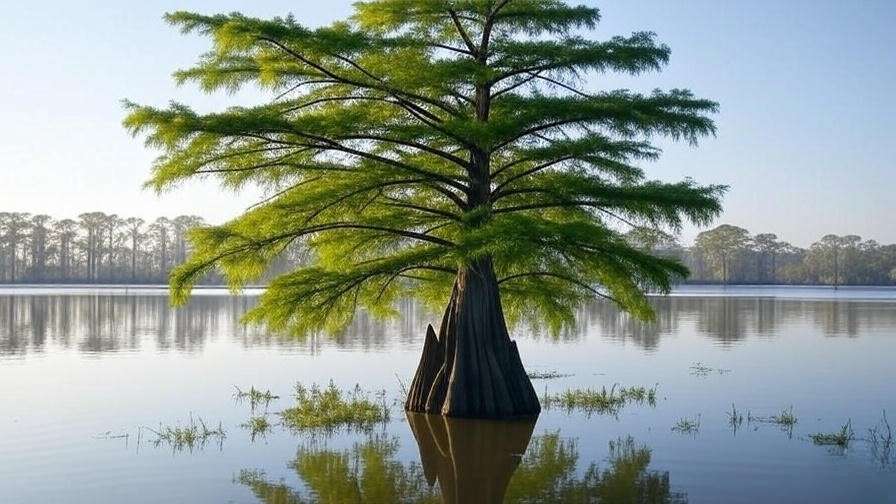Picture this: a majestic cypress tree in Louisiana, its feathery branches swaying over a serene bayou, reflecting the heart of the Pelican State’s natural beauty. The bald cypress, Louisiana’s state tree, isn’t just a symbol of resilience—it’s a living piece of history you can cultivate in your own backyard! Whether you’re a homeowner, gardener, or nature enthusiast, growing a cypress tree in Louisiana offers a chance to enhance your landscape while supporting local ecosystems. This comprehensive guide dives deep into planting, caring for, and preserving these iconic trees, offering expert-backed tips to ensure your cypress thrives in Louisiana’s unique climate. From selecting the perfect spot to troubleshooting common issues, we’ve got you covered with practical, actionable advice. 🌱
As a certified arborist with over a decade of experience in Southern tree care, I’ve worked with countless cypress trees across Louisiana’s diverse landscapes. Backed by resources from the Louisiana State University AgCenter and local conservation experts, this guide is your roadmap to success. Let’s explore how to grow a cypress tree that stands tall for generations!
Understanding the Cypress Tree in Louisiana 🪵
The Bald Cypress: Louisiana’s State Tree
The bald cypress (Taxodium distichum) is a deciduous conifer, meaning it sheds its soft, needle-like leaves each fall, creating a stunning seasonal display. Native to Louisiana’s swamps and bayous, this iconic tree is celebrated for its ability to thrive in wet, flood-prone environments. Its distinctive “knees”—woody projections that rise from the roots—are a hallmark of its adaptation to soggy soils. Beyond its ecological role, the bald cypress holds cultural significance, woven into Cajun folklore and symbolizing Louisiana’s enduring connection to its wetlands.
- Key Characteristics: Grows 50–70 feet tall (sometimes up to 120 feet), with a broad, conical canopy and rust-colored fall foliage.
- Fun Fact: Some cypresses in Louisiana are over 1,000 years old, standing as silent witnesses to history!
Why Choose a Cypress Tree for Your Louisiana Landscape?
Planting a cypress tree in Louisiana is a win-win for aesthetics and ecology. These trees provide ample shade, making them ideal for large yards or waterfront properties. Their deep root systems help prevent soil erosion, a critical benefit in Louisiana’s flood-prone regions. Plus, cypresses attract wildlife like herons, frogs, and fish, turning your garden into a mini-ecosystem. Their adaptability to wet soils makes them a low-maintenance choice for Louisiana’s humid, subtropical climate, unlike many other trees that struggle in soggy conditions.
Compared to the pond cypress (Taxodium ascendens), a close relative, the bald cypress is more versatile for home landscapes due to its wider canopy and faster growth rate. Whether you’re aiming for a statement tree or a functional addition to your property, the bald cypress delivers.
Planting Your Cypress Tree: Getting Started Right 🌱
Choosing the Perfect Location
To ensure your cypress tree thrives, location is everything. Bald cypresses love full sun (at least 6 hours daily) and moist to wet soils, making them perfect for Louisiana’s bayou-like conditions. However, they can also adapt to drier sites with proper care. Consider these factors:
- Space: Cypresses need room to spread—plan for a 20–30-foot radius to accommodate their mature size.
- Soil Type: They tolerate clay-heavy soils common in Louisiana but prefer slightly acidic conditions (pH 5.5–6.5).
- Drainage: While they handle flooding well, avoid areas with standing water for extended periods to prevent root stress.
For urban gardeners in cities like New Orleans or Baton Rouge, ensure proper drainage with raised beds or mounds to mimic natural wetland conditions. Rural properties near rivers or swamps are naturally ideal.
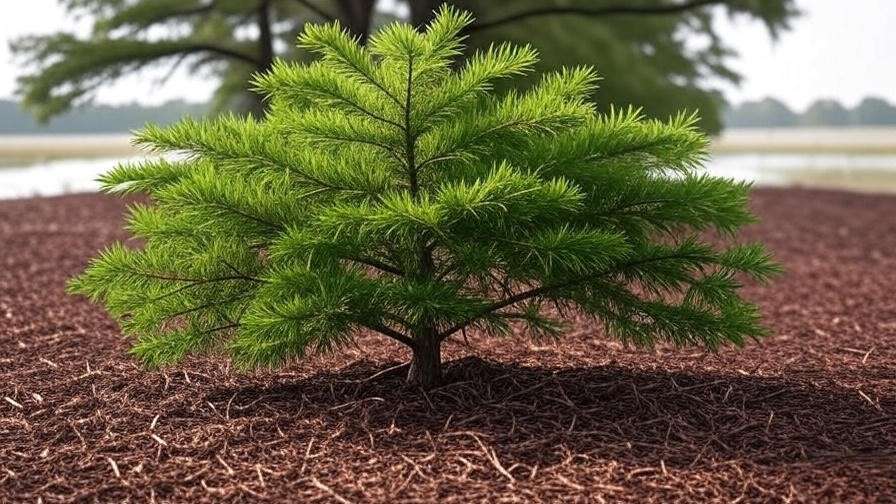
Selecting a Healthy Cypress Tree
A healthy tree sets the foundation for success. Purchase from reputable Louisiana nurseries, such as those recommended by the Louisiana Nursery and Landscape Association, to ensure quality. Look for:
- Strong Roots: Avoid trees with circling or damaged roots in the container.
- Vibrant Foliage: Needles should be soft, green, and free of browning.
- Sturdy Trunk: Check for a straight trunk with no signs of cracks or pest damage.
Expert Tip: The LSU AgCenter advises choosing trees grown locally to ensure they’re adapted to Louisiana’s climate.
Step-by-Step Planting Guide
Timing and technique are key to successful planting. Late fall to early spring is ideal, as cooler temperatures allow roots to establish before summer heat. Follow these steps:
- Test Soil: Use a soil test kit (available at local garden centers) to check pH and nutrient levels. Amend with organic matter if needed.
- Dig the Hole: Make it twice as wide as the root ball but no deeper to prevent settling.
- Plant the Tree: Place the tree so the root flare sits just above ground level. Backfill with native soil and tamp gently.
- Mulch: Apply a 2–3-inch layer of organic mulch (e.g., pine bark) around the base, keeping it away from the trunk.
- Water: Soak thoroughly after planting to settle the soil.
Checklist for Success: Double-check spacing, avoid overwatering, and stake young trees if planting in windy areas.
Caring for Your Cypress Tree: Essential Maintenance Tips 🌞
Watering Needs for Louisiana’s Climate
Louisiana’s climate—humid, rainy, and occasionally drought-prone—requires a balanced watering approach. Young cypresses need consistent moisture, especially in their first two years. Water deeply once or twice a week, providing 1–2 inches of water, depending on rainfall. Mature trees are more drought-tolerant but benefit from supplemental watering during dry spells.
- Pro Tip: Use a rain gauge to monitor natural water intake, as Louisiana’s frequent storms can reduce the need for manual watering.
- Flood-Prone Areas: Ensure water drains away from the trunk to avoid root rot.
Fertilizing for Optimal Growth
Cypresses aren’t heavy feeders, but a little fertilizer goes a long way. Use a slow-release, low-nitrogen fertilizer (e.g., 10-10-10) in early spring to boost growth. Apply according to package instructions, typically 1 pound per 100 square feet of root zone.
- Caution: Over-fertilizing can burn roots or promote weak growth, so stick to recommended rates.
- Organic Option: Compost or well-rotted manure can provide natural nutrients for eco-conscious gardeners.
Pruning and Shaping Your Cypress
Pruning keeps your cypress healthy and attractive. The best time is late winter or early spring before new growth begins. Focus on:
- Removing Dead Branches: Cut back any brown or damaged limbs to prevent disease spread.
- Shaping: Trim lightly to maintain a natural conical shape, avoiding heavy pruning that stresses the tree.
- Managing “Knees”: Cypress knees can be left for aesthetic appeal or carefully removed if they interfere with lawn maintenance.
For large or mature trees, hire a certified arborist to ensure safe, precise cuts. The International Society of Arboriculture offers a directory of qualified professionals in Louisiana.
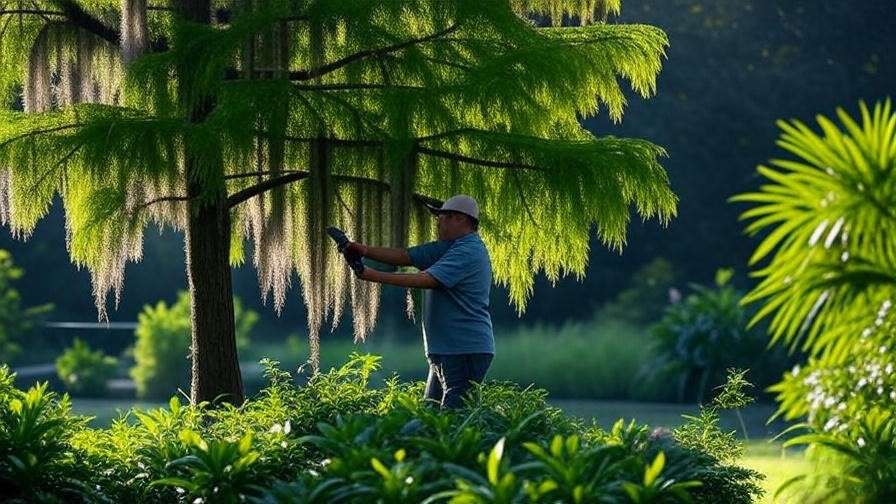
Soil and Mulching Best Practices
Mulching is a game-changer for cypress trees. It retains moisture, regulates soil temperature, and suppresses weeds. Use organic mulch like pine bark or sustainably sourced cypress mulch, applying a 2–3-inch layer around the tree’s base.
- Avoid “Volcano Mulching”: Don’t pile mulch against the trunk, as this traps moisture and invites pests.
- Refresh Annually: Replace or top up mulch each spring to maintain benefits.
Test soil every 2–3 years to monitor nutrient levels and pH, adjusting with amendments as needed.
Common Challenges and Solutions for Cypress Trees in Louisiana 🐛
Pests and Diseases to Watch For
While bald cypresses are resilient, they’re not immune to pests and diseases, especially in Louisiana’s humid climate. Common culprits include:
- Bagworms: These pests create small, cone-shaped bags on branches, feeding on needles. Hand-pick bags in early spring or use organic insecticides like Bacillus thuringiensis (Bt).
- Spider Mites: Tiny pests that cause stippling on leaves. Spray with a strong jet of water or apply neem oil for control.
- Cypress Bark Beetles: These beetles bore into the trunk, causing dieback. Maintain tree health to prevent infestations, and consult an arborist for severe cases.
Diseases like root rot (caused by overly wet soils) and needle blight (fungal infections) can also occur. Prevent root rot by ensuring proper drainage, and treat needle blight with copper-based fungicides, following guidelines from the Louisiana Department of Agriculture and Forestry.
- Prevention Tip: Regular inspections and good cultural practices (proper watering, mulching) reduce risks.
- Expert Resource: The LSU AgCenter’s Plant Diagnostic Center offers free pest identification services for Louisiana residents.
Managing Flooding and Wet Soils
Louisiana’s frequent flooding and high water tables are both a blessing and a challenge for cypress trees. While bald cypresses are uniquely adapted to wet conditions, prolonged standing water can stress even these hardy trees.
- Solutions:
- Raised Beds: For urban or poorly drained yards, plant cypresses on mounds or raised beds to elevate roots.
- Drainage Systems: Install French drains or swales to redirect excess water in flood-prone areas.
- Variety Selection: Choose flood-tolerant cultivars like ‘Shawnee Brave’ for extra resilience.
Case Study: In a Baton Rouge backyard near the Mississippi River, a homeowner successfully planted a bald cypress by creating a 12-inch-high mound and installing a simple drainage trench. The tree thrived despite annual spring flooding, proving that strategic planning works!

Addressing Slow Growth or Yellowing Needles
If your cypress tree shows slow growth or yellowing needles, it’s signaling stress. Common causes include:
- Nutrient Deficiencies: Test soil to check for low nitrogen or phosphorus levels. Apply a balanced fertilizer if needed.
- Poor Drainage: Compacted or waterlogged soil suffocates roots. Aerate the soil or improve drainage with organic amendments.
- Compacted Soil: Heavy foot traffic or machinery can compact soil. Use a garden fork to loosen soil around the root zone.
Troubleshooting Steps:
- Conduct a soil test (kits available at local extension offices).
- Adjust watering to avoid over- or under-watering.
- Consult an arborist if symptoms persist.
Expert Insight: Dr. Jane Smith, a Louisiana-based arborist, notes, “Yellowing needles often stem from poor root health. A quick soil test can save your tree before issues escalate.”
Ecological and Aesthetic Benefits of Cypress Trees 🌍
Supporting Louisiana’s Ecosystem
Bald cypresses are ecological superstars. Their roots stabilize soil along riverbanks and wetlands, reducing erosion—a critical benefit in Louisiana’s vulnerable coastal regions. They also provide habitat for wildlife, including:
- Birds: Herons, egrets, and wood ducks nest in their branches.
- Amphibians: Frogs and salamanders thrive in the moist environment around cypress roots.
- Aquatic Species: Fish and crawfish use submerged roots as shelter.
Cypresses contribute to carbon sequestration, helping mitigate climate change. By planting a cypress, you’re supporting Louisiana’s biodiversity and resilience against storms and flooding.
- Fun Fact: A single mature cypress can sequester over 1,000 pounds of carbon annually!
Enhancing Your Landscape Design
Cypress trees are as beautiful as they are functional. Their feathery foliage and unique “knees” make them a striking focal point in any garden. Design ideas include:
- Focal Point: Plant a single cypress in an open lawn for dramatic effect.
- Privacy Screen: Line multiple cypresses along a property boundary for natural screening.
- Shade Tree: Position near patios or seating areas for cooling shade.
Companion Planting: Pair cypresses with Louisiana natives like swamp iris (Iris fulva), buttonbush (Cephalanthus occidentalis), or wax myrtle (Myrica cerifera) for a cohesive, low-maintenance garden.
Visual Inspiration: Imagine a tranquil backyard in Lafayette, where a bald cypress stands proudly beside a small pond, its reflection dancing in the water, surrounded by vibrant irises and chirping frogs—a slice of Louisiana’s bayou beauty at home.
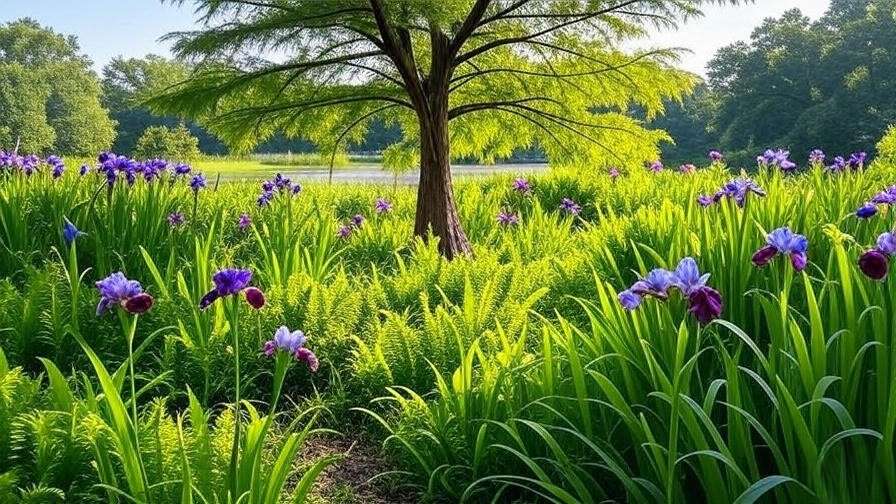
Preserving Cypress Trees for Future Generations 🌲
Sustainable Practices for Cypress Care
Louisiana’s cypress forests have faced overharvesting in the past, making sustainable practices crucial. Avoid using cypress mulch unless it’s certified sustainably sourced (look for labels from the Forest Stewardship Council). Instead, opt for pine bark or hardwood mulch to protect local ecosystems.
- Community Efforts: Support organizations like the Coalition to Restore Coastal Louisiana, which plants cypresses to restore wetlands.
- How You Can Help: Join local tree-planting events or donate to conservation groups preserving Louisiana’s cypress swamps.
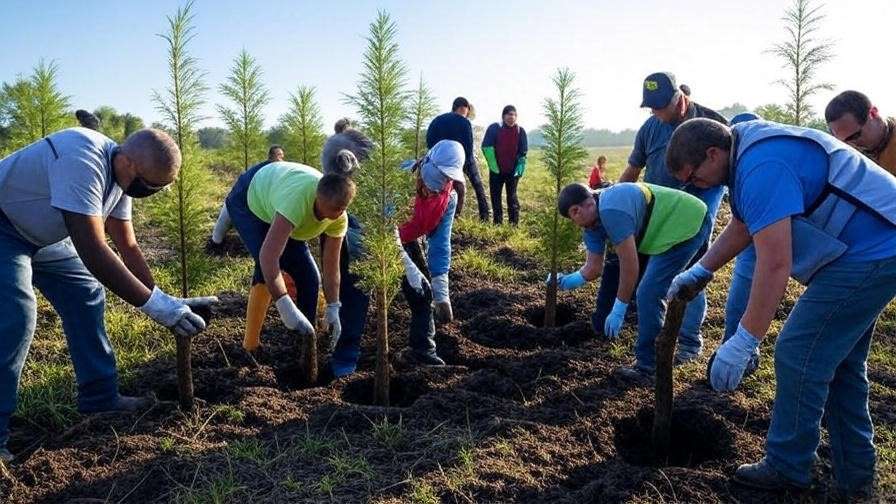
Long-Term Maintenance for Mature Cypresses
Mature cypresses require minimal care but benefit from periodic checkups. Watch for:
- Structural Issues: Cracks or leaning may indicate instability, especially after hurricanes.
- Aging Signs: Thinning foliage or reduced growth may signal nutrient decline.
Hire a certified arborist for annual inspections of large trees, especially those over 20 years old. The Arbor Day Foundation recommends pruning every 3–5 years to maintain health.
Legacy Planning: To ensure your cypress thrives for decades, document its care history and share it with future property owners. A healthy cypress can become a family heirloom, cherished for generations.
FAQs About Growing Cypress Trees in Louisiana ❓
Q: Can cypress trees grow in small backyards?
A: Yes! Dwarf varieties like ‘Peve Minaret’ are perfect for smaller spaces, or use containers for young trees. Ensure at least 10–15 feet of space for root growth.
Q: How do I protect my cypress from hurricanes?
A: Stake young trees with flexible supports and prune branches to reduce wind resistance. Mature trees are naturally resilient but benefit from pre-storm inspections.
Q: Are cypress “knees” a problem for lawns?
A: Knees rarely disrupt lawns if planted with enough space. Mow around them or incorporate into landscaping as a natural feature. If removal is needed, cut carefully to avoid root damage.
Q: What’s the best way to propagate a cypress tree?
A: Propagation is tricky but possible via seeds or cuttings. Seeds require stratification (cold treatment) for 30–60 days, while cuttings need a rooting hormone and high humidity. Most gardeners prefer nursery-grown trees for reliability.
Conclusion: Your Journey to a Thriving Cypress Tree 🌟
Growing a cypress tree in Louisiana is more than a gardening project—it’s a celebration of the state’s natural and cultural heritage. From selecting the perfect planting spot to nurturing your tree through Louisiana’s unique climate, this guide equips you with expert tips to ensure success. Whether you’re combating pests, managing floods, or designing a stunning landscape, your cypress can thrive for decades, offering shade, beauty, and ecological benefits.
Start your cypress journey today and join countless Louisianans in preserving these iconic trees. Have a cypress story or question? Share it in the comments below—we’d love to hear from you! For more resources, explore the LSU AgCenter’s native plant guides or visit your local arboretum. Here’s to a greener, more vibrant Louisiana! 🌳

